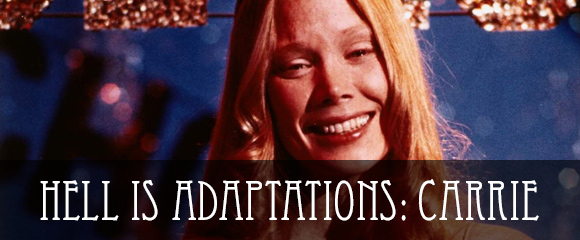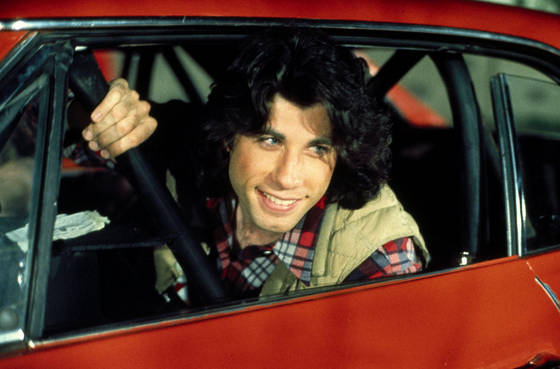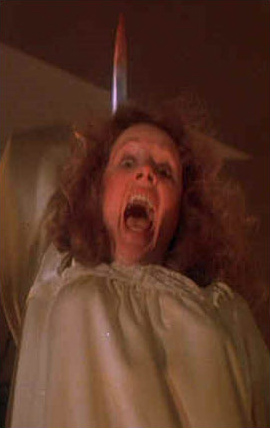Hell is Adaptations: Carrie

Horror fans owe Tabitha King a dozen roses, a box of chocolates, something. When her husband Stephen tossed the unfinished manuscript of his first novel into the trash, it was Mrs. King who fished it out, read it over, and convinced him to finish it. And so we have Carrie and possibly all that has come after it.
I am not a Stephen King reader, and so, almost forty years after its publication, Carrie is the first of his novels I have read. However, on whatever Friday in 1976 Brian de Palma’s film version opened in Dallas, I was in line. I had seen de Palma’s films Sisters, Phantom of the Paradise, and Obsession and loved them all – well, maybe I admired Obsession more than it loved it. Those films and a poster featuring Sissy Spacek covered in blood got myself and some friends to the theater for that Friday bargain matinee. We expected to enjoy ourselves. We had no idea just how much fun the next ninety-eight minutes were going to be.
King’s novel is a solid first effort, but perhaps its greatest merit lies in the template it provided for a classic horror film. Book to film comparisons are always fraught endeavors, subject to special pleading by fans of one or the other. (As you can tell, I am coming down on the side of the film.) To create his novel, King took a retrospective approach. He interspersed the narrative with police interviews, court documents, and newspaper and magazine reports on what happened the night Carrie White went to the prom. This is a technique that builds suspense and provides multiple viewpoints that get readers out of the hothouse atmosphere of the White household. But to make a film, de Palma jettisoned all this stylistic apparatus and got on with the story, drilling an implacable line through the material to the nightmarish finale. There are some clumsy moments in King’s novel, but de Palma never takes a false step. It is surprising, in fact, just how much of King’s original dialog and storytelling makes it verbatim into the film.
That opening shower scene, for instance. Carrie getting her period on screen was probably more of a shock for viewing audiences than for readers. To this day it is not a moment one expects to be so graphically depicted. Sissy Spacek’s panic is frightening to watch. She wins our sympathy and what turns into bullying by tossed tampons and the chant “Plug it up!” is both grotesque and horrifying. All this comes straight from King. Then there is Mrs. White’s referral to Carrie’s breasts as her “dirty pillows.” That’s so weird that I remember it getting a laugh in the theater, but later Mrs. White’s mania is revealed with lines like, “First it’s the blood and then it’s the boys, sniffing around like dogs.” This is mind-boggling hatefulness and dementia all courtesy of Mr. King.
De Palma follows King’s lead on Carrie’s exploration of her telekinetic powers and her mother’s sick perversion of Christianity, and where he departs it is usually for either typically Hollywood reasons or to streamline the story. Does anyone really believe that well-intentioned Sue (Amy Irving) would get her popular boyfriend Tommy (William Katt with Harpo Marx blonde curls) to ask Carrie to the prom? This is King’s unlikeliest plot element, and the movie makes it even more. In order to establish Sue and Tommy as “good kids,” de Palma has them actually study on their study dates. In King’s novel their relationship is sexual, and it’s after a round of sweaty, backseat, teenage getting it on that Sue exercises her power over Tommy and sets what becomes the fatal invitation in place. Chris Hargenson (Nancy Allen as mean girl extraordinaire) is beautiful and vicious and dates local hood Billy Nolan (John Travolta) just to show that she can. King depicts their sexual relationships with all the violence de Palma only hints at. But if anyone is going to cook up a plan to dump pig blood on Carrie at the prom, it’s Chris. And Billy is just the burgeoning psycho to work out the details.
King often has characters refer to Carrie as bovine and so socially inept that students are equally amused and repelled by her. But this is Hollywood, and de Palma’s choice of Spacek for the role means that Carrie will come off as fragile and consistently sympathetic. Spacek’s loveliness will also make her transformation for her prom date, and Tommy’s growing affection for her, more believable than in the book. In the novel, Mrs. White (Piper Laurie) works in a laundry and the job has given her the arms and demeanor of a linebacker – a linebacker for Jesus. Laurie make the character equal parts ethereal visionary and mean-spirited, sexually demented thug. She is a Bible- thumping bore to her neighbors but a horror at home. When Carrie crosses her she is dragged to her prayer closet to consider her sins.
In these sequences de Palma introduces an element totally at odds with the novel and the character. According to King, in the closet Carrie has for her spiritual edification a print illustrating Jonathan Edwards’ sermon “Sinners in the Hands of an Angry God.” King’s describes this as the work of an artist named Derrault, whom I have not been able to track down except in references that lead back to the novel. So maybe he made it up. In any event, a cheap reproduction of an image illustrating a fire-and-brimstone sermon by an 18th century Puritan minister seems a likelier adornment for Carrie’s prayer closest than the plaster statuette of St. Sebastian de Palmer puts there. The director admits that he was using his own Catholic upbringing in this choice, and a young man tied to a tree stump and pierced with arrows is more photogenic than some smudgy print.
Would Mrs. White have an image of a Catholic saint, executed for resisting the sexual overtures of his commanding officer, in her home? Probably not. But de Palma pays this unlikely choice off in the most spectacular way possible. In the novel, after killing her classmates at the prom and a good portion of the local citizenry as well, King has Carrie do in her mother by simply stopping her heart. De Palma, who knows that we don’t need to see Carrie tearing up her hometown, saves his final great set piece the mother/daughter confrontation. Mrs. White is homicidal by this point and gets as far a one good stab into Carrie’s back. Carrie retaliates by emptying the kitchen cabinets on her mother, pinning her to the doorframe with carving knives and turning her into a human pincushion that mimics the St. Sebastian Carrie has spent longs hours with in her hated closet. The potato peeler that penetrates Mrs. White’s heart is the coup de grace.
De Palma wraps his horror story in a vicious variation on teen comedies and juvenile delinquent films. He is revealing the sick, fetid underbelly of John Hugh’s brat pack films ten years before they were even made, and having a great time doing it. In fact, everyone is having a great time. Sissy Spacek had received good notices in Terrence Mallick’s Badlands, and John Travolta had one season of Welcome Back Kotter to his credit, but most of the young cast had done little television and tiny film roles. Betty Buckley, who plays the girls’ coach, would not become a Broadway star for another decade. Piper Laurie had not made a film in almost ten years, and she is clearly having the time of her life. Despite the material and gallons of fake blood, everyone reports having fun on the set. According to Nancy Allen, she and Travolta were having such a good time they thought of themselves as comic relief. It was not until they saw an early cut of the film that they realized they were portraying horrible human beings.
Read the novel and watch Stephen King figure out how to write a horror story. Watch the movie, sit back, and enjoy the ride.
 Rent Carrie from Amazon Instant Video
Rent Carrie from Amazon Instant Video



















 Full Details
Full Details





3 Comments
Chris was played by Nancy Allen, blonde and blue-eyed who was also in RoboCop. Not Karen Allen, who was Marion Ravenwood in Raiders of the Lost Ark. Different ladies.
Other than that, I agree. I like DePalma’s vision of this book. And I thought Sissy Spacek brought a deceptive strength that was finally revealed when someone was genuinely kind to her. I always cringe at the scene at the prom when she believes her mother’s premonition has come true, and everyone is laughing at her. They aren’t; many who were genuinely trying to be nice to her were horrified by the prank. But years of conditioning changed Carrie’s perception.
@Dee: Great review! Are you going to see the new Carrie movie when it comes out? Setting aside the fact that I think it’s a waste of time remaking an already good film, I wonder how it’s going to compare to both the book and the original movie? Not interested enough to go see it myself but I would be interested to hear from you and others on how it turns out.
@Erin: I changed Karen to Nancy Allen in the article. I skimmed right past that when I read the review – good catch.
@Erin. Thanks for the Karen/Nancy correction. I am a horrible copy editor.
@Dave I doubt I will go rushing out to see the new Carrie. DVR’s are made for such films. Before I wrote this I watched the made-for-tv version and decided there wasn’t enough there to even bother mentioning it. There is also a Carrie 2, maybe made for SyFy. I saw the last bit of it once and lots of people died during a wild high school party.
Sorry, the comment form is closed at this time.